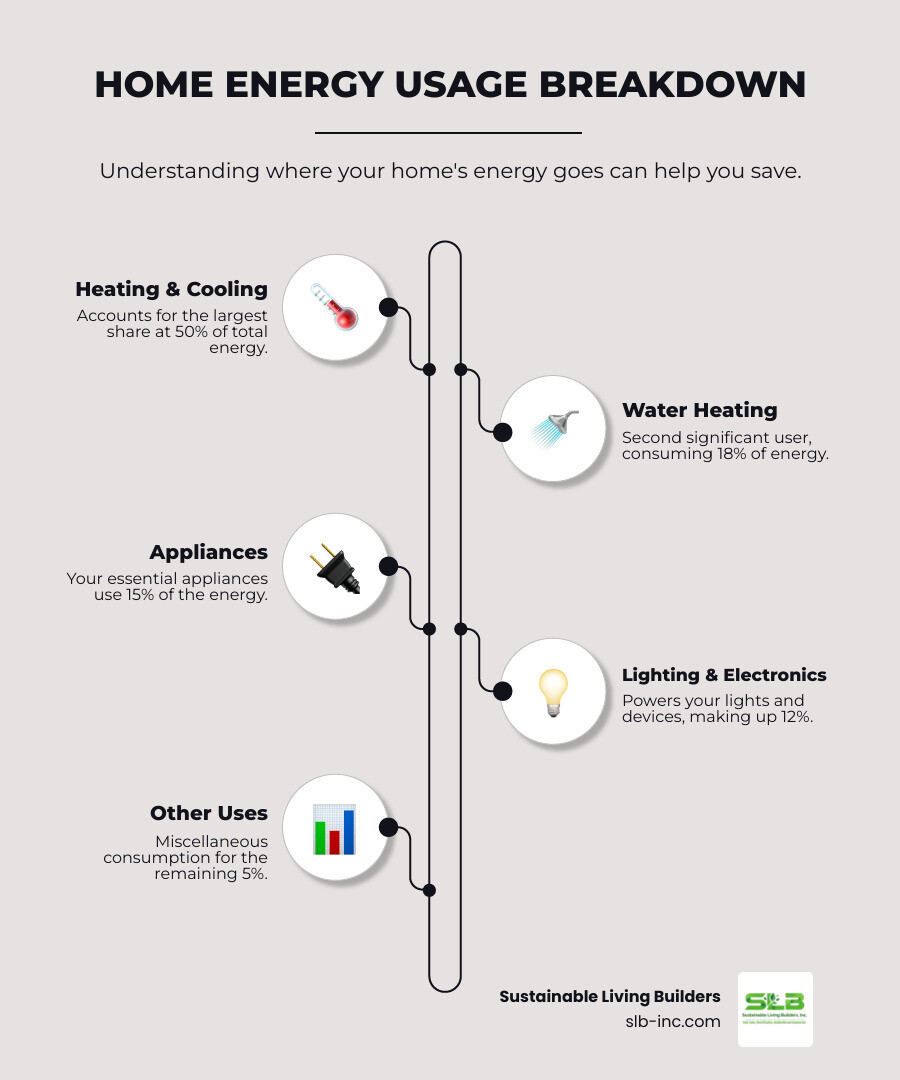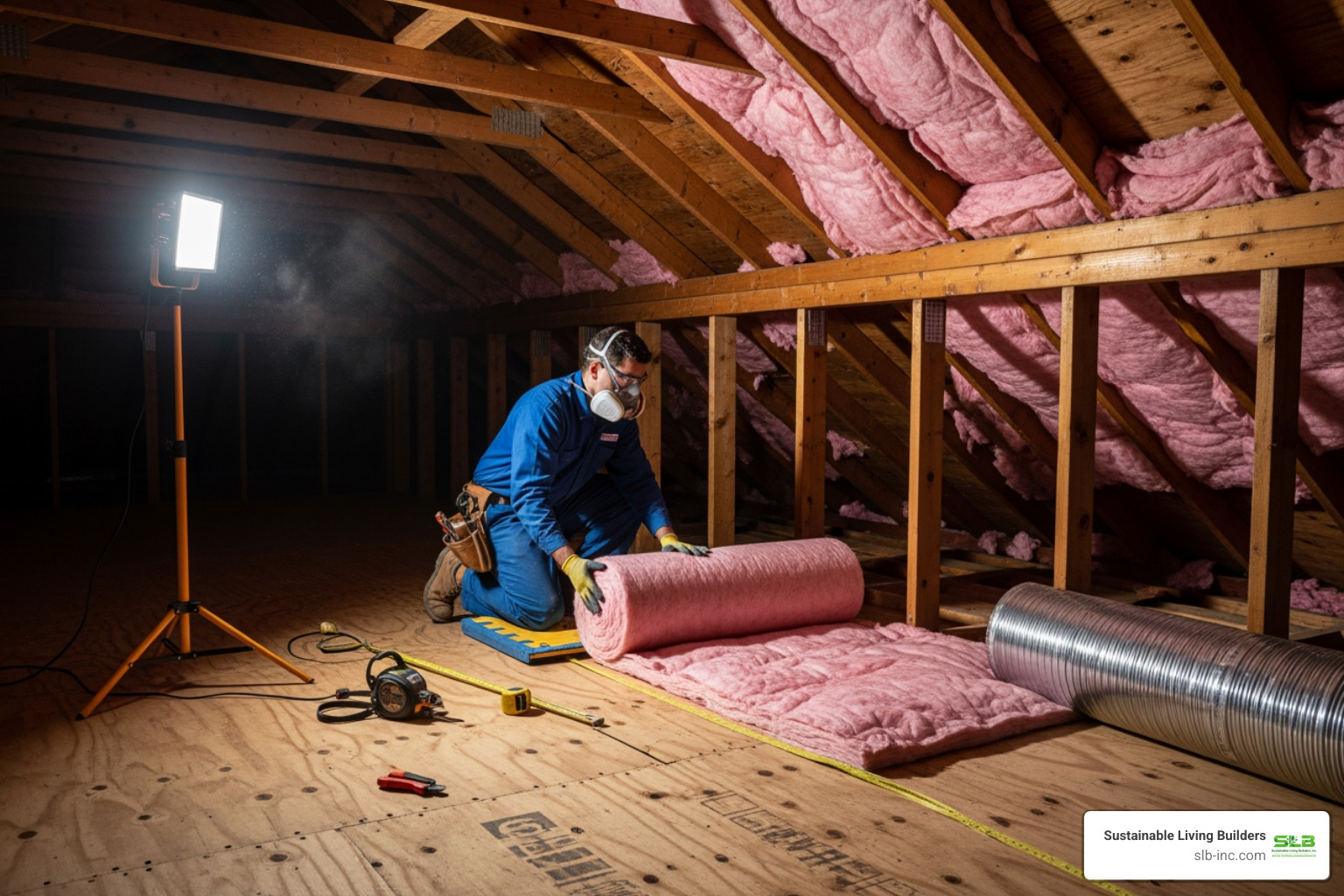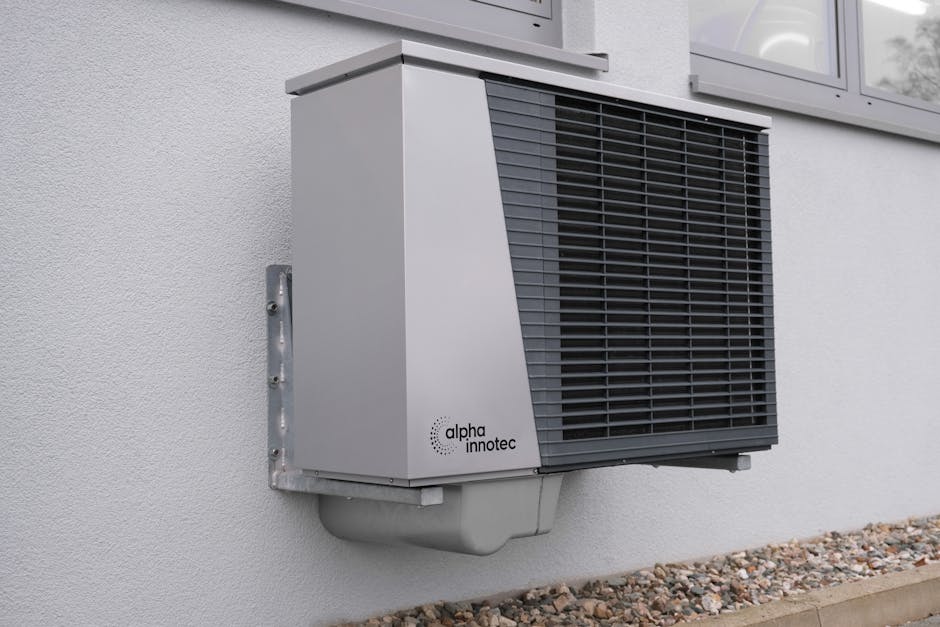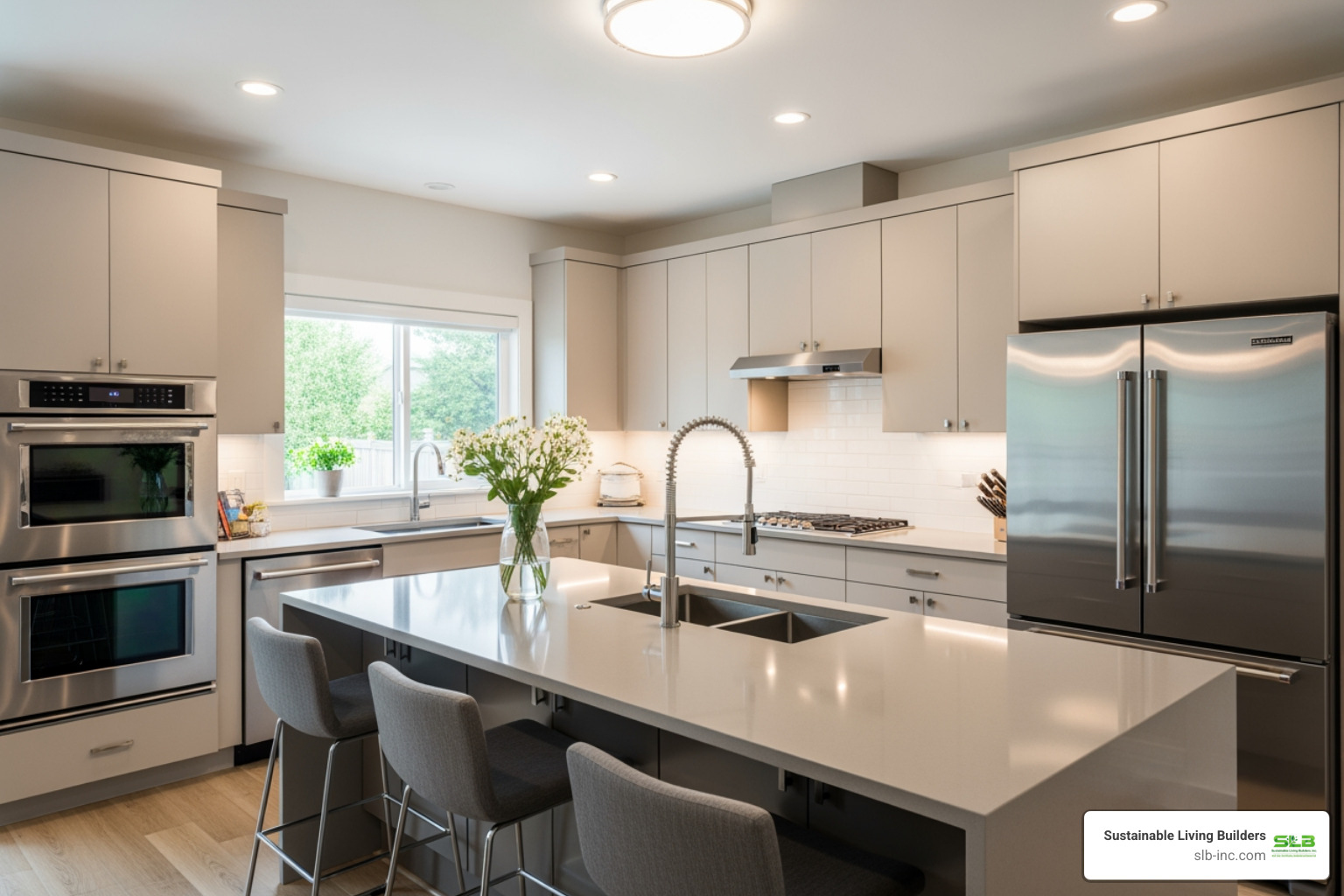Why Increasing Home Energy Efficiency Matters for Your Budget and Comfort
Increase home energy efficiency to slash utility bills, boost year-round comfort, and shrink your environmental footprint. Here’s how to get started:
- Start with an energy audit to find where your home loses energy.
- Seal air leaks and add insulation to save on heating and cooling.
- Upgrade to ENERGY STAR certified appliances like heat pumps and LED lighting.
- Install smart thermostats to optimize heating and cooling.
- Consider renewable energy like solar panels.
Homeowners in Santa Rosa, Sonoma County, and the Bay Area know that high energy bills are a constant concern. The good news is that most homes waste significant energy through air leaks, poor insulation, and outdated systems—which means there’s enormous potential for savings.
For a comprehensive approach, explore our sustainable building services. Ready to transform your home’s energy performance? Contact Sustainable Living Builders for a personalized assessment.
Implementing a few strategic improvements can cut energy bills by 15% or more. Since heating and cooling account for nearly half of your energy use, a whole-house approach that addresses your home’s envelope, systems, and habits offers significant savings and a more comfortable, healthier home.

Start with an Energy Check-Up (Ways 1-2)
Before replacing windows or upgrading appliances, you need to understand where your energy is going. An energy check-up reveals the hidden culprits behind high utility bills, allowing you to increase home energy efficiency in the ways that matter most for your home.
1. Conduct a Home Energy Audit
A home energy audit is a systematic examination of how your home uses and loses energy. It’s the first step toward real savings.
The DIY approach is great for quick wins. Walk through your home looking for obvious drafts around windows and doors, check attic insulation depth, and inspect appliances. The U.S. Department of Energy offers helpful home energy auditing resources. Since your roof is a key part of your home’s envelope, understanding what to expect during a roof inspection is also a valuable part of your assessment.
The professional route provides a deeper analysis. Certified auditors use specialized equipment like a blower door to measure air leakage and thermographic scans to create heat maps that reveal hidden energy loss. They prioritize problems based on impact and cost-effectiveness, which is especially valuable for major renovations or if your energy bills in Santa Rosa or Sonoma County seem unusually high. You can find qualified auditors through the Residential Services Network or the Building Performance Institute.
2. Understand Your Home Energy Score
Created by the U.S. Department of Energy, the Home Energy Score is like a nutrition label for your home’s energy use. It provides a standardized score comparing your home’s efficiency to others.
The score comes with a customized list of recommended improvements ranked by impact, along with estimated potential savings for each upgrade. For homeowners in the Bay Area, this tool offers a clear roadmap to increase home energy efficiency and prioritize investments for the biggest return. Learn more at the Home Energy Score website.
Fortify Your Home’s Envelope for Maximum Efficiency (Ways 3-5)
Your home’s “envelope”—its roof, walls, windows, doors, and foundation—is the barrier separating your interior from the elements. A properly sealed and insulated envelope is your most powerful tool to increase home energy efficiency, saving energy and eliminating drafts and hot spots.

3. Seal Air Leaks to Stop Energy Waste
Air leaks around windows, doors, plumbing penetrations, and electrical outlets allow conditioned air to escape, wasting money. Sealing these leaks with caulk, weatherstripping, and door sweeps is one of the most cost-effective improvements you can make.
According to ENERGY STAR, combining air sealing with proper insulation can reduce annual energy bills by 15% or more. For homeowners in Sonoma County, this is a smart first step.
4. Add Proper Insulation
Insulation slows heat transfer, keeping your home warm in winter and cool in summer. Its effectiveness is measured by R-value—the higher the R-value, the better it insulates. Many older homes in Sonoma County are under-insulated by today’s standards.
Adding insulation to your attic, exterior walls, and crawl spaces dramatically improves comfort and efficiency. The U.S. Department of Energy notes that proper insulation and air sealing can cut annual energy bills by up to 15%. Learn about the importance of sustainable insulation and our insulation solutions.
5. Upgrade to High-Performing Windows and Doors
Older windows and doors are often a major source of energy loss. Modern, ENERGY STAR certified replacements are engineered to prevent this. Look for a low U-factor (measures heat loss) and a low Solar Heat Gain Coefficient (SHGC), which is ideal for sunny climates.
Features like low-emissivity (low-e) coatings and multiple panes with insulating gas create a powerful thermal barrier. Replacing old windows with ENERGY STAR models can lower energy bills by an average of 12% while also reducing noise and drafts. For more details, see the guide on Energy Performance Ratings For Windows, Doors, and Skylights. You can also explore efficient ways to add natural light with skylights and sun tunnels.
How to Increase Home Energy Efficiency with System Upgrades (Ways 6-9)
After fortifying your home’s envelope, focus on the mechanical systems that consume the most energy. Strategic upgrades to your heating, cooling, and water heating systems can deliver substantial savings and comfort, leveraging technology to increase home energy efficiency.

6. Maintain and Upgrade Your HVAC System
Your HVAC system accounts for nearly half your energy bill. Regular maintenance, including annual professional tune-ups and changing filters every 2-3 months, is crucial for peak efficiency. A clogged filter forces your system to work harder, increasing energy use.
If your system is over 10-15 years old, consider upgrading. Heat pumps are the future of clean heating and cooling, moving heat rather than creating it. This process uses about 50% less electricity for heating than electric furnaces. As an all-in-one heating and cooling unit, a heat pump is an excellent choice for Bay Area homes. Learn more with our guide to transitioning from gas to electric heating systems and our approach to home electrification.
7. Seal and Insulate Your Ductwork
Leaky ducts in unconditioned spaces like attics or crawl spaces waste a tremendous amount of energy and cause uneven temperatures. Sealing ducts with mastic or specialized tape (not standard duct tape) and insulating them ensures conditioned air reaches your living spaces. Properly sealed and insulated ductwork improves comfort and reduces strain on your HVAC system. ENERGY STAR offers helpful FAQs on heating and cooling.
8. Boost Water Heating Efficiency
Water heating is your second-largest energy expense. Heat pump water heaters are a game-changer, pulling heat from the surrounding air to heat water. They are far more efficient than traditional models; find efficient options among ENERGY STAR certified water heaters.
For immediate savings, lower your water heater’s thermostat to 120°F. You can also wrap the tank in an insulation blanket and insulate hot water pipes. Finally, installing WaterSense-labeled low-flow showerheads and faucets reduces hot water consumption without sacrificing performance.
9. Install a Smart Thermostat
A programmable or smart thermostat automates temperature control to match your routine, potentially cutting heating and cooling costs by up to 15%. Smart thermostats learn your preferences, allow remote adjustments via smartphone, and can use geofencing to adjust temperatures automatically. They also provide energy reports to help you find more savings.
Proper placement is key; a thermostat near a draft or heat source will give false readings. Ensure yours is in the right place for accurate sensing. For advanced monitoring, see how a Span Panel can help monitor electricity usage.
Adopt Smarter Habits and Technology (Ways 10-12)
Daily choices and smarter technology can deliver meaningful savings with little to no cost. These accessible changes help you increase home energy efficiency without major renovations.

Simple ways to increase home energy efficiency
Simple habits make a big difference. Wash laundry in cold water, as most energy is used for heating it. Use your dishwasher’s air-dry setting and only run full loads. For small meals, use a microwave or toaster oven instead of a full-sized oven to save energy. Manage your window treatments by closing blinds in summer to block heat and opening them in winter to let in natural warmth. Explore more tips in ENERGY STAR’s guide to energy savings at home.
10. Switch to Efficient Lighting and Appliances
Replacing your most-used light bulbs with ENERGY STAR certified LEDs can cut lighting energy use by up to 90% and they last much longer. The Department of Energy has guidance on lighting choices to save you money. When buying new appliances, always look for the ENERGY STAR label, as these products use 10-20% less energy than standard models. For kitchen renovations, consider an induction cooktop, which is faster and more efficient than gas or traditional electric ranges.
11. Conquer Phantom Power Consumption
Many electronics draw power even when turned off. This “phantom load” can account for 5-10% of your monthly utility bill. The solution is simple: unplug devices when not in use or plug them into a smart power strip that can be switched off completely. This is an easy way to increase home energy efficiency without changing your lifestyle.
12. Use Landscaping for Natural Climate Control
Strategic landscaping can help regulate your home’s temperature. Plant deciduous trees on the south and west sides for summer shade and winter sun. Use evergreen trees as windbreaks on the north and northwest sides to block cold winter winds. In California, xeriscaping (low-water landscaping) also saves the energy used to pump and treat water, benefiting both your utility bills and the environment.
Power Your Home Sustainably (Ways 13-14)
For the ultimate step in efficiency and sustainability, consider generating your own power. These solutions transform your home from an energy consumer to a producer, reducing your carbon footprint and protecting you from rising utility costs. We offer foolproof choices for every sustainable living home.
13. Install a Cool Roof
A traditional dark roof can reach 150°F or more in the summer, radiating heat into your home and forcing your AC to work overtime. A cool roof uses reflective materials to bounce sunlight back into the atmosphere, keeping your roof up to 50°F cooler. This is especially valuable in the sunny climates of Marin, Napa, and Sonoma Counties.
The result is a cooler attic, less heat transfer, and lower cooling costs. This technology is a cornerstone of our roofing solutions and the advantages of sustainable roofing. Learn more from the Department of Energy’s Cool Roofs page.
14. Harness Solar Energy
Installing a solar energy system is a transformative way to increase home energy efficiency and control your energy future. Solar panels convert sunlight into electricity, reducing or eliminating your utility bills. Through net metering, you can often send excess power back to the grid for credit.
For a seamless look, solar shingles like the Tesla Solar Roof function as both a protective roof and a power generator. Adding a battery storage system allows you to store excess solar energy for use at night or during outages, providing true energy independence.
Home solar increases your property value, protects you from rate hikes, and may qualify you for tax credits. For many in the Bay Area, solar panels are a worthwhile investment. The Department of Energy offers guidance on installing renewable energy systems, and we provide custom solar energy systems for your needs.
Frequently Asked Questions about Increasing Home Energy Efficiency
What are the most cost-effective ways to improve home energy efficiency?
The most cost-effective improvements are air sealing and insulation. These foundational steps tackle energy loss at its source, offering a high return on investment. Simple measures like caulking, weatherstripping, and adding attic insulation can dramatically cut energy bills. Sealing and insulating ductwork is also crucial. It’s best to fix these “leaks” before investing in new equipment to increase home energy efficiency.
What is a ‘whole-house systems approach’ to energy efficiency?
A whole-house systems approach views your home as an integrated system where all parts work together. Instead of isolated fixes, this strategy considers how insulation, windows, HVAC, and ductwork interact. This holistic method optimizes energy performance, comfort, air quality, and durability, leading to better long-term results and greater savings than piecemeal upgrades.
How can I find rebates and tax credits for energy efficiency upgrades?
Financial incentives can help you increase home energy efficiency. Start by checking these resources:
- The ENERGY STAR Rebate Finder lists local rebates for certified products when you enter your zip code.
- The IRS website has details on the Energy Efficient Home Improvement Credit for qualifying upgrades like insulation, windows, and HVAC systems.
- Your local utility company and California-specific programs may offer additional rebates. Researching these incentives can significantly reduce your upfront investment.
Conclusion
To increase home energy efficiency is to create a home that works smarter, feels more comfortable, and is better for the planet. By improving your home’s energy performance, you create a healthier environment for your family and contribute to a more sustainable future.
You can start small with basics like sealing air leaks and adding insulation, then move on to system upgrades like heat pumps and smart thermostats, and eventually consider renewable options like solar panels. Each step builds on the last, creating an integrated, efficient home.
For homeowners in Santa Rosa, Sonoma, Marin, and Napa Counties, our climate is ideal for strategies like cool roofs and solar power. With numerous incentives available, there has never been a better time to invest in your home’s future.
At Sustainable Living Builders, we help guide these choices. Whether you’re interested in solar roofing, home electrification, or a comprehensive energy retrofit, we bring expertise and a commitment to sustainability to every project.
Ready to make your home more efficient, comfortable, and sustainable? Contact Sustainable Living Builders today to start building a brighter, more energy-efficient future.
